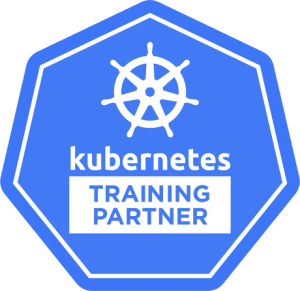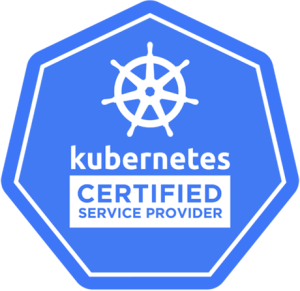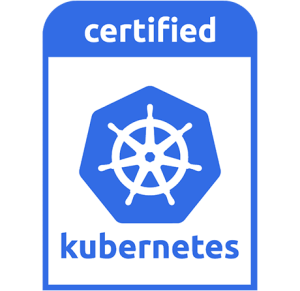Blogs
Welcome back to the second part of our series on navigating the complexities of air-gapped environments in Kubernetes. If you haven't read Part 1, we highly recommend you start there to understand the foundational concepts. In this blog post, we’ll be discussing common challenges, best practices for overcoming those hurdles, and how KubeOps KOSI can facilitate efficient and secure air-gapped deployments.
Challenges in Air-Gapped Environments
- Software Updates
The isolation that makes air-gapped environments secure also makes it difficult to update software. This means that administrators have to manually import updates, a time-consuming process that can also introduce human errors.
- Dependency Management
Many applications have external dependencies. In an air-gapped environment, each of these needs to be manually managed, which can be error-prone and complex.
- Monitoring and Logging
Monitoring solutions often rely on cloud-based services. In an air-gapped environment, you'll need to set up local instances of these services, which may not always be straightforward.
- Data Synchronization
Data integrity is crucial. Without the ability to sync data in real-time, there’s a risk of data loss or data corruption during manual or batch transfers.
- Time Synchronization
Even keeping the system clocks synchronized across a cluster becomes an issue without internet access. This can be critical for applications that are sensitive to timing issues.
- Certificate Management
Digital certificates for SSL/TLS can’t easily be updated, making expired certificates a significant problem that needs proactive management.
- Compliance
Regulatory standards can be challenging to maintain without real-time updates and monitoring, requiring extra diligence on the part of the administrators.
- Security Patching
Air-gapped environments are not immune to vulnerabilities. Manually updating each node with the latest security patches is both cumbersome and risky.
- Resource Constraints
Limited bandwidth and computational resources often become a bottleneck in air-gapped environments, hampering operational efficiency.
- Troubleshooting
Isolation makes it hard to use online resources for troubleshooting, often leaving administrators dependent on local logs and documentation, which might be insufficient.
Best Practices
- Use Offline Repositories
Instead of relying on live repositories for software updates, maintain a local, offline repository to ensure the smooth operation of your cluster.
- Scheduled Data Import-Export
Establish a secure, automated pipeline for data to be moved in and out of the air-gapped environment to ensure data integrity and security.
- Implement Network Policies
Use network policies to restrict traffic only to approved services, thereby limiting the attack surface of your environment.
- Manual Approvals
For additional security, implement a manual approval process for any data transferred in or out of the air-gapped network.
- Batch Processing
For computational tasks that do not require real-time processing, batch processing can help mitigate the resource constraints faced.
- Local NTP Servers
Establish local Network Time Protocol (NTP) servers to keep system clocks in sync across your cluster.
- Multi-Factor Authentication
MFA provides an additional layer of security, especially crucial in an environment where each node may not receive real-time security updates.
- Automated Backup Systems
Frequent backups should be conducted within the air-gapped environment to prevent data loss or corruption.
- Pre-Validation of Software
Before importing any new software or updates into the air-gapped environment, run a pre-validation process to check for security vulnerabilities.
- Security Audits
Regular audits of both the physical and software elements can identify vulnerabilities before they can be exploited.
KubeOps KOSI’s Role in Airgap Readiness
What is KubeOps KOSI?
KubeOps KOSI is a specialized software installer designed for Kubernetes environments. Built to help you define, install, and manage self-contained software packages, KubeOps KOSI offers a simplified yet secure deployment process. Inspired by Helm's usability, this package manager allows for all necessary artifacts and dependencies to be bundled into one downloadable package from the KubeOps hub.
Why Use KubeOps KOSI in an Air-Gapped Environment?
The value of KubeOps KOSI becomes even more apparent in air-gapped environments. Here are some reasons why:
Streamlined Deployments
In settings where internet connectivity is either limited or non-existent, KOSI's bundling feature becomes a crucial asset. By packaging applications and their dependencies together, it ensures a consistent deployment process, mitigating risks associated with dynamic, internet-based dependency resolution.
Efficient Management
Air-gapped environments often make manual dependency management a daunting task. KOSI eliminates this challenge by automatically managing all relevant dependencies, thereby reducing the chance of human errors and simplifying the overall deployment process.
Enhanced Security
Given that air-gapped settings typically cannot benefit from real-time updates and patches, the importance of initial software security is magnified. KubeOps KOSI makes sure that all bundled packages are secure, adding an extra layer of defense.
Flexibility and Compatibility
KOSI's compatibility with other commonly-used tools like Helm and Docker means that it can easily fit into your existing CI/CD pipelines. This makes KOSI a versatile solution for a variety of deployment challenges, including those unique to air-gapped environments.
Overcoming Network Limitations
The tool’s ability to create self-contained, self-sufficient packages means that deployments can occur smoothly even when outgoing internet access is restricted or blocked by proxies.
Conclusion
Setting up and managing an air-gapped environment poses a unique set of challenges that require specialized solutions. However, with meticulous planning, following best practices, and the right tools like KubeOps KOSI, these challenges can be effectively managed. Thus, the key to a robust, secure, and efficient air-gapped Kubernetes environment lies in a holistic approach that addresses its complex facets. With tools like KubeOps KOSI in your arsenal, achieving operational excellence even in the most restricted environments becomes not just a possibility but a well-within-reach reality.
Check out our latest blogpost
Kubernetes in Focus: An Outlook on Future Growth Areas
Any Questions?
Please feel free to contact us for any question that is not answered yet.
We are looking forward to get in contact with you!
KubeOps GmbH
Hinter Stöck 17
72406 Bisingen
Germany
-
Telefon:
+49 7433 93724 90
-
Mail:
This email address is being protected from spambots. You need JavaScript enabled to view it.





